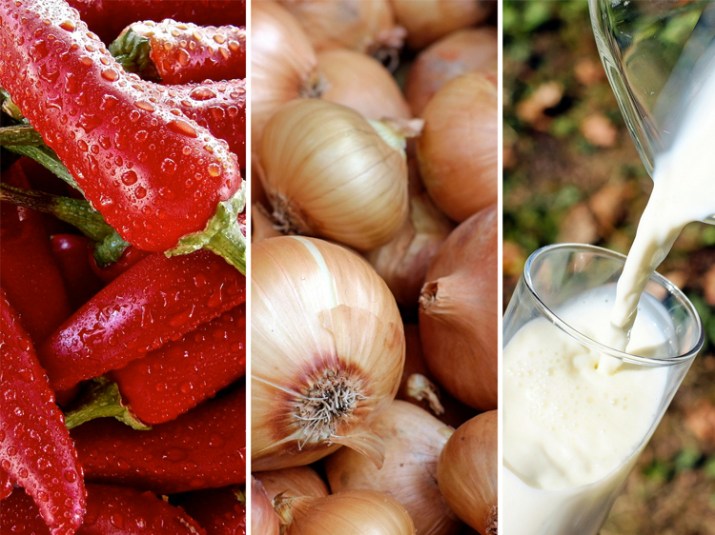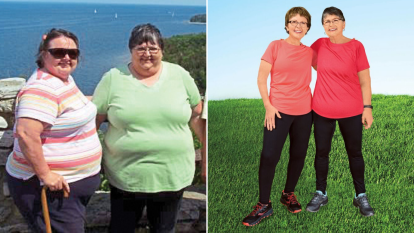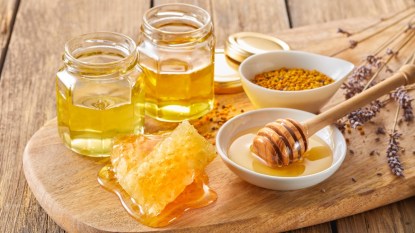5 Tried-and-True Ways to Lower Your Blood Pressure

One of the best ways to prevent heart attacks and strokes is to maintain lower blood pressure. If your doctor says your numbers are creeping up, one or more of these clever strategies could correct the problem — and fast!
1. Add a few hot peppers to your diet.
Biting into a hot pepper — like a jalapeño, habanero, serrano, or Fresno chili — could protect you from developing high cholesterol, high blood pressure, and heart disease, according to Kate Patton, RD.
“Overall, diets or eating patterns that are rich in plant-based foods, including the Mediterranean and DASH (Dietary Approaches to Stop Hypertension) diets, have been shown to lower risk of heart disease and high blood pressure,” Patton told Everyday Health. “I would therefore recommend choosing hot peppers, but there’s no recommended quantity. Choose a variety of different types and colors to maximize intake of phytonutrients.”
Hot peppers contain capsaicin, which is what gives the fiery fruit their heat. Researchers in China and Germany have found that capsaicin helps relax blood vessels. This is great news, as tense blood vessels can block the flow of blood, which might lead to heart attacks or strokes.
This doesn’t mean you should run into the kitchen and gorge on hot peppers — though if you can stand the heat, adding a few chilies into your weekly meal plan might give your heart the healthy boost it needs.
2. Drink two ounces of aloe vera juice a day.
Aloe vera has been used for hundreds of years as a way to heal topical skin conditions such as sunburn, psoriasis, and even dandruff. Aloe vera is great for burns, though that’s not all this prickly plant can help treat. Aloe vera juice has been proven to lower cholesterol, reduce triglycerides, and lower blood pressure.
Aloe vera juice comes from the gel part of the plant’s leaves. But don’t be fooled by its appearance: This elixir is loaded with vitamins and nutrients, among them folic acid, niacin (vitamin B3), calcium, potassium, manganese, and zinc.
Researchers found that consuming up to two ounces of aloe vera juice ($22.95, Amazon) per day could remedy high blood pressure. But be careful: High doses of aloe vera juice can cause stomach cramping, diarrhea, nausea, and the loss of electrolytes.
If you’re unable to find aloe vera juice, consider taking an all-natural aloe vera supplement ($10.44, Amazon) Be sure to consult your doctor first, as taking supplements without a doctor’s approval could do your body more harm than good. This is especially true for patients who have diabetes or are taking heart medication.
3. An onion a day keeps the doctor away.
Believe it or not, onions have a variety of health benefits, among them reducing the risk of blood clots, improving sleep, and boosting immunity. Don’t worry if raw onions aren’t your thing — cooked onions are loaded with tons of good-for-you nutrients, too! Plus, there are several types out there (sweet onions, yellow onions, white onions, red onions, shallots, green onions, leeks, etc.), so you can have the option to be choosy if you want.
Even boiled and pickled onions have health benefits! As with any pickled product, though, always check to make sure the jar isn’t packed with too many additives.
Onions contain the antioxidant quercetin, which is also found in green tea, apples, red wine, and berries, among other things. Quercetin has been proven to reduce blood pressure, decrease prostatitis symptoms, and aid symptoms associated with interstitial cystitis.
Like most antioxidants, quercetin is also available as a supplement ($19.09, Amazon). But you’d be better off consuming quercetin the natural way, whether that means eating more onions (red onions are high in quercetin), snacking on pineapple, or adding more garlic in your diet.
4. Up your daily milk intake.
Drinking milk is a great way to strengthen your bones, but did you know that enjoying a cold glass of milk can lower your blood pressure, too? If you’re finicky about the taste of milk on its own, just add it to your favorite recipes. A little bit of milk can go a long way — make fluffier eggs, thicker French toast, or creamier oatmeal. Better yet, make a smoothie!
In 2014, researchers at the University of Utah found that drinking just two cups of milk per day could help prevent hypertension which, according to the American Heart Association, is a blood pressure level higher than 130 over 80 millimeters of mercury.
“These meta-analyses indicate that there is a link between increasing the number of glasses of milk a day and a lower incidence of hypertension,” Sabita S. Soedamah-Muthu, Ph.D., said in a statement. “Since milk also contains a decent source of potassium and magnesium, it is a food source that helps meet these nutrient needs.”
The U.S. Department of Agriculture recommends women and men between the ages of 19 and 51 consume around three cups of dairy per day, which could also be accomplished by snacking on yogurt, cheese, or soy milk.
5. Fight high blood pressure with a healthy dose of chlorella.
Chlorella is a blue-green freshwater algae that’s been proven to boost patients’ energy levels, support fat loss, and lower blood pressure. That’s because it’s a nutrient-dense superfood, meaning it’s filled with vitamins such as A, B2, and B3, plus nutrients like iron, magnesium, zinc, and protein.
In a recent study published in the Journal of Medicinal Food, researchers found that 8,000 mg of chlorella divided into two doses per day helped patients lower their cholesterol and blood sugar levels.
Chlorella can be added to smoothies or taken as a tablet ($27.21, Amazon). If you decide to use it in a smoothie, you should brace yourself. Chlorella is super strong, so you’ll need to add a banana or some other sweet fruit to hide the taste. As always, be sure to consult a health-care provider before taking an over-the-counter supplement. Patients who are allergic to iodine and those who are on blood thinners such as Coumadin should speak with their doctor before using chlorella.
We write about products we think our readers will like. If you buy them, we get a small share of the revenue from the supplier.
More From Woman’s World
Stay Healthy and Vibrant with the 10 Best Multivitamins for Women Over 50
These 7 Changes To Your Diet Can Prevent Ovarian Cancer
4 Ways to Safeguard Your DNA to Help You Look Younger for Longer













